Books by Eleni Vasileiou
Common Sustainable Governance Model for Archaeological Parks, 2023
Within the framework of the TRANSFER project was developped a new Common Sustainable Governance M... more Within the framework of the TRANSFER project was developped a new Common Sustainable Governance Model for Archaeological Parks, among which Dodona in the Ioannina district (Epirus), with guidelines towards enhancing the preservation and valorizatin of archaeological heritage within the Adrion area.

2015
Σκοπός της διατριβής ήταν η διαμόρφωση της κεραμικής ποικιλομορφίας στην κεντρική Ήπειρο κατά την... more Σκοπός της διατριβής ήταν η διαμόρφωση της κεραμικής ποικιλομορφίας στην κεντρική Ήπειρο κατά την Εποχή του Χαλκού και την Πρώιμη Εποχή του Σιδήρου με κύριο μεθοδολογικό εργαλείο τη μακροσκοπική εξέταση, καταγραφή και οργάνωση του υλικού σε τύπους και κατηγορίες. Επιπροσθέτως, μέσα από τη διενέργεια λεπτών τομών, για πρώτη φορά σε προϊστορική κεραμική από την Ήπειρο, εξετάστηκαν μικροσκοπικά οι κεραμικές ύλες από τις οποίες κατασκευάστηκαν τα αγγεία προκειμένου να εντοπιστούν ομοιότητες και διαφορές μεταξύ των αγγείων από τις υπό εξέταση θέσεις, καθώς και να επισημανθεί η χρήση τοπικών ή μη πηγών. Σε ένα δεύτερο επίπεδο, μέσα από τη σύνθεση των δεδομένων από αδημοσίευτα και δημοσιευμένα σύνολα επιχειρήθηκε η ανασύνθεση της οργάνωσης της κεραμικής παραγωγής και του πλαισίου κατανάλωσης. Η παρουσίαση της οργάνωσης της κεραμικής παραγωγής βασίστηκε στις παραμέτρους της τυποποίησης (ως προς το σχήμα, την κεραμική ύλη, την τεχνολογία κατασκευής και τις διακοσμητικές μεθόδους), της επένδυσης εργασίας και της δεξιοτεχνίας. Η μελέτη του παράγοντα της κατανάλωσης συνοψίστηκε σε τρία ερωτήματα: Τι είδους κεραμική καταναλώθηκε (κεραμικές κατηγορίες και σχήματα), από ποιον και σε ποια περίσταση; Τέλος, επιχειρήθηκε η χρονολόγηση των κεραμικών συνόλων βάσει στρωματογραφικών ακολουθιών, ραδιοχρονολογήσεων και τυπολογικών συγκρίσεων. Η χειροποίητη παράδοση δεν εγκαταλείφτηκε από τους κατοίκους της κεντρικής Ηπείρου καθόλη τη διάρκεια της Εποχής του Χαλκού και της Πρώιμης Εποχής Σιδήρου. Η οργάνωση της παραγωγής διαφοροποιήθηκε μετά την εισαγωγή της αμαυρόχρωμης κεραμικής. Στη μετάβαση από την Εποχή του Χαλκού στην Πρώιμη Εποχή του Σιδήρου παρατηρήθηκε εμπλουτισμός του υλικού πολιτισμού. Δεν επρόκειτο για μια εποχή παρακμής και απομόνωσης αλλά για μια εποχή ακμής, προόδου και εξέλιξης.
The aim of the present thesis was the development of pottery variability in central Epirus during the Bronze and Early Iron Age using as main methodological tool macroscopic examination, recording and organization of material types and categories. Additionally, through the analysis with thin section petrography, which represents the first archaeometric study of prehistoric pottery from Epirus, we studied microscopically the pottery fabrics from which local vases were made in order to identify similarities and differences between them, as well as to discuss the use or not of local sources. On a second level, through the synthesis of data from unpublished and published sites it was attempted to reconstruct the mode of pottery production and consumption framework. The presentation of the mode of pottery production was based on standardization parameters (in terms of shape, fabrics, construction technology and decorative methods), labor investment and skill. The study of consumption was summarized in three questions: What kind of pottery was consumed (pottery categories and shapes), by whom and on what occasion? Finally, we tried to date the different pottery groups based on stratigraphic sequences, radiocarbon and typological comparisons. Handmade pottery was not abandoned by the inhabitants of Epirus throughout the Bronze and Early Iron Age. The organization of production changed after the introduction of matt-painted pottery. In the transition from the Bronze Age to the Early Iron Age was observed enrichment of material culture. There was not a time of decline and isolation but a period of prosperity, progress and development.
Το έργο υλοποιείται στο πλαίσιο του προγράμματος INTERREG IIIA ΕΛΛΑΔΑ -ΙΤΑΛΙΑ, Άξονας 3, Μέτρο 3.... more Το έργο υλοποιείται στο πλαίσιο του προγράμματος INTERREG IIIA ΕΛΛΑΔΑ -ΙΤΑΛΙΑ, Άξονας 3, Μέτρο 3.2 και συγχρηματοδοτείται κατά 75% από το ΕΤΠΑ και 25% από εθνικούς πόρους Il progetto si attua in seguito del Progetto INTERREG IIIA ITALIA-GRECIA, Asse 3, Misura 3.2 e finanziato per il 75% dal Fondo Finanziario Europeo e per il 25% da Foandi Nazionali
Papers by Eleni Vasileiou
Archaeological Reports 70 , 2024
This paper offers an overview of the published material of the Epirotic sanctuaries. The presenta... more This paper offers an overview of the published material of the Epirotic sanctuaries. The presentation will be
limited to the geographical area of modern Epirus (prefectures of Arta, Ioannina, Preveza, and Thesprotia) and
it will cover the period from the Early Iron Age (eighth century BC) to the beginning of the Roman conquest
(second to early first century BC). Areas of ritual character in Epirus range from shrines to organized
sanctuaries. It is not always easy to identify the deity/deities worshipped at the ritual places presented.
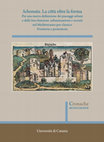
Schemata. la citta oltre la forma, 2024
Epirus is situated in the NW part of Greece. Central Epirus is dominated by two different
geograp... more Epirus is situated in the NW part of Greece. Central Epirus is dominated by two different
geographical units, the Ioannina basin and the mountains surrounding it. The Ioannina basin is the focus of
the present article. Organized human activity in the Ioannina basin is attested as early as the Upper Paleolithic. A number of settlements dating from the Neolithic till the early Iron Age period has been excavated and
studied. A concentration of sites is noted in the area of Neochoropoulo. It seems that small groups of farmers
were obliged to move according to the flood phenomena of the region. Pottery is dominated of handmade
containers. The use of handmade high stemmed kylix in a number of sites indicates some technical expertise.
However, it is very difficult to comment on the organization of the pottery since no production areas or kilns
have been discovered. It is also very difficult to glean chronological indications from handmade pottery, given
the lack of well stratified deposits.
Δωδώνη. Τα χρηστήρια ελάσματα / dodona. The oracular tablets, 2023
Δωδώνη. Τα χρηστήρια ελάσματα/ Dodona. The oracular tablets, 2023
ΤΟ ΑΡΧΑΙΟΛΟΓΙΚΟ ΜΟΥΣΕΙΟ ΙΩΑΝΝΙΝΩΝ, 2008
The book is a guide to the Archaeological Museum of Ioannina which houses a large number of objec... more The book is a guide to the Archaeological Museum of Ioannina which houses a large number of objects from all over Epirus in Northwestern Greece and which cover a long period of time from the Palaeolithic age to the Roman imperial times. The archaeological findings are exhibited in the Museum in sections, which are intertwined in three axes - chronological-geographical and thematic. Adopting a modern approach to the cultural remains of the past, the visitor of the Museum is invited to follow, understand, but also to reflect on the evolution of the various aspects of the public and private life of the ancient inhabitants of Epirus. One room of the Museum is dedicated to the sanctuary of Dodona and a second to the king of Epirus Pyrrhus.
Λεπτομέρειες. Ψηφιακή έκθεση και δράση 2021/2022, 2022

ΜΟΛΟΤΤΙΣ. Αρχαιολογικός Άτλαντας των αρχαίων θέσεων της Π.Ε. Ιωαννίνων / MOLOTTIS. Archaeological map of the ancient sites of the regional unit of Ioannina, Epirus, 2022
Οικιστική οργάνωση Μολοττίδος 281 ΤΟ ΙΔΙΑΙΤΕΡΑ ΚΑΤΑΚΕΡΜΑΤΙΣΜΕΝΟ ΑΝΑΓΛΥΦΟ ΤΗΣ ΗΠΕΙΡΟΥ, που χαρακτη... more Οικιστική οργάνωση Μολοττίδος 281 ΤΟ ΙΔΙΑΙΤΕΡΑ ΚΑΤΑΚΕΡΜΑΤΙΣΜΕΝΟ ΑΝΑΓΛΥΦΟ ΤΗΣ ΗΠΕΙΡΟΥ, που χαρακτηρίζεται από τεράστιους ορεινούς όγκους ανάμεσα στους οποίους αναπτύσσονται μικρές κοιλάδες, έπαιξε καθοριστικό ρόλο στη διαμόρφωση των πολιτιστικών σχηματισμών, δηλαδή των εθνών, που κατοίκησαν την περιοχή (Στράβων Γεωγραφικά Ζ, 7.5). Οι Ηπειρώτες, όπως και οι γείτονες τους οι Μακεδόνες, έμειναν πιστοί στην παλαιοκρατική φυλετική οργάνωση, σύμφωνα με τις φιλολογικές, επιγραφικές και νομισματικές μαρτυρίες των ιστορικών χρόνων. Από την Εποχή του Σιδήρου (12 ος-7 ος αι. π.Χ.) και έως τα τέλη του 5 ου αι. π.Χ. επικρατούσε η κατοίκηση κατά κώμας (Ψευδο-Σκύλαξ, Περίπλ. 32), η κατοίκηση δηλαδή σε μικρούς ανοχύρωτους οικισμούς. Η ανεύρεση οικοδομικών καταλοίπων είναι πενιχρή και έχει οδηγήσει στην υπόθεση ότι οι εγκαταστάσεις είχαν την μορφή πρόχειρων καταυλισμών, στους οποίους κατοικούσαν νομάδες ή ημινομάδες βοσκοί 282. Χαρακτηριστικό παράδειγμα αυτού του τύπου εγκατάστασης, κατά την πρώιμη εποχή του Σιδήρου, αποτελούν οι ορεινοί οικισμοί στη Βίτσα Ζαγορίου 283 , στο Λιατοβούνι Κόνιτσας 284 και στο Πωγώνι (Παλιουριά Παλιοπύργου, Γκλάβα Κάτω Μερόπης και Ανεμόμυλος Μερόπης) 285. Στις πεδινές εκτάσεις του λεκανοπέδιου αντίστοιχου τύπου οικισμοί αναπτύχτηκαν στην Κρύα 286 , στη Δουρούτη 287 και στους ανατολικούς πρόποδες του λόφου της Καστρίτσας 288. Οι οικίες είχαν την μορφή απλών οικοδομημάτων, μονόχωρων ή δί
ΜΟΛΟΤΤΙΣ. Αρχαιολογικός Άτλαντας των αρχαίων θέσεων της Π.Ε. Ιωαννίνων / MOLOTTIS. Archaeological map of the ancient sites in the regional unit of Ioannina, Epirus, 2022
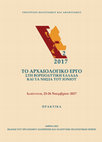
ΤΟ ΑΡΧΑΙΟΛΟΓΙΚΟ ΕΡΓΟ ΣΤΗ ΒΟΡΕΙΟΔΥΤΙΚΗ ΕΛΛΑΔΑ ΚΑΙ ΤΑ ΝΗΣΙΑ ΤΟΥ ΙΟΝΙΟΥ ΥΠΟΥΡΓΕΙΟ ΠΟΛΙΤΙΣΜΟΥ ΚΑΙ ΑΘΛΗΤΙΣΜΟΥ 2017 2 ΑΘΗΝΑ 2022 ΕΚΔΟΣΗ ΤΟΥ ΟΡΓΑΝΙΣΜΟΥ ΔΙΑΧΕΙΡΙΣΗΣ ΚΑΙ ΑΝΑΠΤΥΞΗΣ ΠΟΛΙΤΙΣΤΙΚΩΝ ΠΟΡΩΝ Ιωάννινα, 23-26 Νοεμβρίου 2017 ΠΡΑΚΤΙΚΑ, 2022
TWO CLAY SPOONS FROM THE SETTLEMENT OF PALAMPOUTI,
NEOCHOROPOULO (IOANNINA)
ELENI VASILEIOU - PAN... more TWO CLAY SPOONS FROM THE SETTLEMENT OF PALAMPOUTI,
NEOCHOROPOULO (IOANNINA)
ELENI VASILEIOU - PANAGIOTIS TZOVARAS
In 2009 at the site Palampouti of Neochoropoulo (Ioannina) a prehistoric settlement of the
transition from the Middle to Late Bronze Age came to light. The settlement yielded a
significant number of handmade pottery, clay spindle whorls and flint artifacts. Among the
pottery, two possible parts of clay spoons, which have been found at the northwestern part
of the settlement, are of special interest. Clay spoons were very common in Europe and
the Balkan peninsula since the Neolithic period. For Epirus, it is a unique finding, with the
exception of the site Sevasto in Thesprotia, indicative of the dietary habits of the inhabitants.
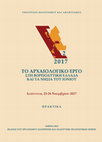
ΤΟ ΑΡΧΑΙΟΛΟΓΙΚΟ ΕΡΓΟ ΣΤΗ ΒΟΡΕΙΟΔΥΤΙΚΗ ΕΛΛΑΔΑ ΚΑΙ ΤΑ ΝΗΣΙΑ ΤΟΥ ΙΟΝΙΟΥ ΥΠΟΥΡΓΕΙΟ ΠΟΛΙΤΙΣΜΟΥ ΚΑΙ ΑΘΛΗΤΙΣΜΟΥ 2017 2 ΑΘΗΝΑ 2022 ΕΚΔΟΣΗ ΤΟΥ ΟΡΓΑΝΙΣΜΟΥ ΔΙΑΧΕΙΡΙΣΗΣ ΚΑΙ ΑΝΑΠΤΥΞΗΣ ΠΟΛΙΤΙΣΤΙΚΩΝ ΠΟΡΩΝ Ιωάννινα, 23-26 Νοεμβρίου 2017 ΠΡΑΚΤΙΚΑ, 2022
EDUCATIONAL ACTIVITIES AT THE ARCHAEOLOGICAL MUSEUM
OF IOANNINA: 2014-2016
IOULIA KATSADIMA - ELE... more EDUCATIONAL ACTIVITIES AT THE ARCHAEOLOGICAL MUSEUM
OF IOANNINA: 2014-2016
IOULIA KATSADIMA - ELENI VASILEIOU
Thirty-six educational programs have been developed the last years at the Archaeological
Museum of Ioannina (AMI). Each program has been designed by the archaeologists of the
Ephorate within the framework of festivities, of public activities on a national level of the
Ministry of Culture and of international campaigns.
Today, from the bulk of the programs, seven are addressed to kindergarten and primary
school children, while most of them, eighteen, to children of the last classes of primary
school, twelve to high school students and one to university students.
Within the Framework of the National Strategic Reference Framework Two Museum
Kits have been developed, one for the ancient toys of the Museum and one for the Sanctuary
of Dodona respectively, as well as a digital application. The latter entitled “The adventures
of Molossidis: Timodamus’ trip” is bilingual (Greek-English) designed for a touch screen
and distributed for free for operating system of portable devices: Android 4.2 and iOS 7.
ΤΟ ΑΡΧΑΙΟΛΟΓΙΚΟ ΕΡΓΟ ΣΤΗ ΒΟΡΕΙΟΔΥΤΙΚΗ ΕΛΛΑΔΑ ΚΑΙ ΤΑ ΝΗΣΙΑ ΤΟΥ ΙΟΝΙΟΥ ΥΠΟΥΡΓΕΙΟ ΠΟΛΙΤΙΣΜΟΥ ΚΑΙ ΑΘΛΗΤΙΣΜΟΥ ΑΘΗΝΑ 2022 ΕΚΔΟΣΗ ΤΟΥ ΟΡΓΑΝΙΣΜΟΥ ΔΙΑΧΕΙΡΙΣΗΣ ΚΑΙ ΑΝΑΠΤΥΞΗΣ ΠΟΛΙΤΙΣΤΙΚΩΝ ΠΟΡΩΝ, 2022
TWO TOMBS OF THE END OF THE BRONZE AGE
AT SKAMNELI ZAGORIOU
NIKOS CHOINAS - PARASKEVI GIOUNI - EL... more TWO TOMBS OF THE END OF THE BRONZE AGE
AT SKAMNELI ZAGORIOU
NIKOS CHOINAS - PARASKEVI GIOUNI - ELENI VASILEIOU
The summer of 2016 an undisturbed cist tomb was located by a group of locals outside the
village Skamneli Zagoriou. The grave contained two skeletonsfurnished with pottery, bronze
and bone jewelry, as well as with a significant number of beads of various materials. Not far
from it, a second, plundered, cist tomb came to light. These two graves can be added to the
list of cist tombs, placed in strategic points of inland Epirus (Kalpaki, Mazaraki, Elafotopos)
and associated with the emergence of a new powerful social group, which derives its power
from the control of passages and commerce.

ΤΟ ΑΡΧΑΙΟΛΟΓΙΚΟ ΕΡΓΟ ΣΤΗ ΒΟΡΕΙΟΔΥΤΙΚΗ ΕΛΛΑΔΑ ΚΑΙ ΤΑ ΝΗΣΙΑ ΤΟΥ ΙΟΝΙΟΥ ΥΠΟΥΡΓΕΙΟ ΠΟΛΙΤΙΣΜΟΥ ΚΑΙ ΑΘΛΗΤΙΣΜΟΥ ΑΘΗΝΑ 2022 ΕΚΔΟΣΗ ΤΟΥ ΟΡΓΑΝΙΣΜΟΥ ΔΙΑΧΕΙΡΙΣΗΣ ΚΑΙ ΑΝΑΠΤΥΞΗΣ ΠΟΛΙΤΙΣΤΙΚΩΝ ΠΟΡΩΝ Ιωάννινα, 23 - 26 Νοεμβρίου 2017 ΠΡΑΚΤΙΚΑ, 2022
NEW DATA FOR THE NEOLITHIC PERIOD IN INLAND EPIRUS:
HABITATION REMAINS FROM EPISKOPI (SERVIANA, I... more NEW DATA FOR THE NEOLITHIC PERIOD IN INLAND EPIRUS:
HABITATION REMAINS FROM EPISKOPI (SERVIANA, IOANNINA)
ELENI VASILEIOU - PARASKEVI YOUNI - EVGENIA ADAM
Salvage excavations at the site of Episkopi (Serviana, Ioannina) brought to light a hellenistic
rural facility and a roman cemetery. At the area of the cemetery a series of pits of various dimensions were discovered, dug into the natural clay soil. More specifically, pit A contained
an important number of lithic artefacts and of handmade pottery. Nine postholes (A-Θ) (two
eight shaped, six circular and one of uncertain shape) were traced on the floor of the pit.
The structure, possibly a subterranean hut, has been radiometrically dated to the Neolithic
period. This paper aims at presenting some preliminary remarks from the study of the lithics
and the handmade pottery.

The aim of the present thesis was the development of pottery variability in central Epirus during... more The aim of the present thesis was the development of pottery variability in central Epirus during the Bronze and Early Iron Age using as main methodological tool macroscopic examination, recording and organization of material types and categories. Additionally, through the analysis with thin section petrography, which represents the first archaeometric study of prehistoric pottery from Epirus, we studied microscopically the pottery fabrics from which local vases were made in order to identify similarities and differences between them, as well as to discuss the use or not of local sources. On a second level, through the synthesis of data from unpublished and published sites it was attempted to reconstruct the mode of pottery production and consumption framework. The presentation of the mode of pottery production was based on standardization parameters (in terms of shape, fabrics, construction technology and decorative methods), labor investment and skill. The study of consumption was...
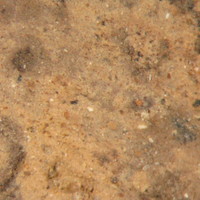

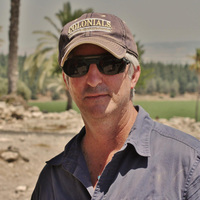





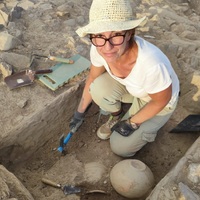


Uploads
Books by Eleni Vasileiou
The aim of the present thesis was the development of pottery variability in central Epirus during the Bronze and Early Iron Age using as main methodological tool macroscopic examination, recording and organization of material types and categories. Additionally, through the analysis with thin section petrography, which represents the first archaeometric study of prehistoric pottery from Epirus, we studied microscopically the pottery fabrics from which local vases were made in order to identify similarities and differences between them, as well as to discuss the use or not of local sources. On a second level, through the synthesis of data from unpublished and published sites it was attempted to reconstruct the mode of pottery production and consumption framework. The presentation of the mode of pottery production was based on standardization parameters (in terms of shape, fabrics, construction technology and decorative methods), labor investment and skill. The study of consumption was summarized in three questions: What kind of pottery was consumed (pottery categories and shapes), by whom and on what occasion? Finally, we tried to date the different pottery groups based on stratigraphic sequences, radiocarbon and typological comparisons. Handmade pottery was not abandoned by the inhabitants of Epirus throughout the Bronze and Early Iron Age. The organization of production changed after the introduction of matt-painted pottery. In the transition from the Bronze Age to the Early Iron Age was observed enrichment of material culture. There was not a time of decline and isolation but a period of prosperity, progress and development.
Papers by Eleni Vasileiou
limited to the geographical area of modern Epirus (prefectures of Arta, Ioannina, Preveza, and Thesprotia) and
it will cover the period from the Early Iron Age (eighth century BC) to the beginning of the Roman conquest
(second to early first century BC). Areas of ritual character in Epirus range from shrines to organized
sanctuaries. It is not always easy to identify the deity/deities worshipped at the ritual places presented.
geographical units, the Ioannina basin and the mountains surrounding it. The Ioannina basin is the focus of
the present article. Organized human activity in the Ioannina basin is attested as early as the Upper Paleolithic. A number of settlements dating from the Neolithic till the early Iron Age period has been excavated and
studied. A concentration of sites is noted in the area of Neochoropoulo. It seems that small groups of farmers
were obliged to move according to the flood phenomena of the region. Pottery is dominated of handmade
containers. The use of handmade high stemmed kylix in a number of sites indicates some technical expertise.
However, it is very difficult to comment on the organization of the pottery since no production areas or kilns
have been discovered. It is also very difficult to glean chronological indications from handmade pottery, given
the lack of well stratified deposits.
NEOCHOROPOULO (IOANNINA)
ELENI VASILEIOU - PANAGIOTIS TZOVARAS
In 2009 at the site Palampouti of Neochoropoulo (Ioannina) a prehistoric settlement of the
transition from the Middle to Late Bronze Age came to light. The settlement yielded a
significant number of handmade pottery, clay spindle whorls and flint artifacts. Among the
pottery, two possible parts of clay spoons, which have been found at the northwestern part
of the settlement, are of special interest. Clay spoons were very common in Europe and
the Balkan peninsula since the Neolithic period. For Epirus, it is a unique finding, with the
exception of the site Sevasto in Thesprotia, indicative of the dietary habits of the inhabitants.
OF IOANNINA: 2014-2016
IOULIA KATSADIMA - ELENI VASILEIOU
Thirty-six educational programs have been developed the last years at the Archaeological
Museum of Ioannina (AMI). Each program has been designed by the archaeologists of the
Ephorate within the framework of festivities, of public activities on a national level of the
Ministry of Culture and of international campaigns.
Today, from the bulk of the programs, seven are addressed to kindergarten and primary
school children, while most of them, eighteen, to children of the last classes of primary
school, twelve to high school students and one to university students.
Within the Framework of the National Strategic Reference Framework Two Museum
Kits have been developed, one for the ancient toys of the Museum and one for the Sanctuary
of Dodona respectively, as well as a digital application. The latter entitled “The adventures
of Molossidis: Timodamus’ trip” is bilingual (Greek-English) designed for a touch screen
and distributed for free for operating system of portable devices: Android 4.2 and iOS 7.
AT SKAMNELI ZAGORIOU
NIKOS CHOINAS - PARASKEVI GIOUNI - ELENI VASILEIOU
The summer of 2016 an undisturbed cist tomb was located by a group of locals outside the
village Skamneli Zagoriou. The grave contained two skeletonsfurnished with pottery, bronze
and bone jewelry, as well as with a significant number of beads of various materials. Not far
from it, a second, plundered, cist tomb came to light. These two graves can be added to the
list of cist tombs, placed in strategic points of inland Epirus (Kalpaki, Mazaraki, Elafotopos)
and associated with the emergence of a new powerful social group, which derives its power
from the control of passages and commerce.
HABITATION REMAINS FROM EPISKOPI (SERVIANA, IOANNINA)
ELENI VASILEIOU - PARASKEVI YOUNI - EVGENIA ADAM
Salvage excavations at the site of Episkopi (Serviana, Ioannina) brought to light a hellenistic
rural facility and a roman cemetery. At the area of the cemetery a series of pits of various dimensions were discovered, dug into the natural clay soil. More specifically, pit A contained
an important number of lithic artefacts and of handmade pottery. Nine postholes (A-Θ) (two
eight shaped, six circular and one of uncertain shape) were traced on the floor of the pit.
The structure, possibly a subterranean hut, has been radiometrically dated to the Neolithic
period. This paper aims at presenting some preliminary remarks from the study of the lithics
and the handmade pottery.
The aim of the present thesis was the development of pottery variability in central Epirus during the Bronze and Early Iron Age using as main methodological tool macroscopic examination, recording and organization of material types and categories. Additionally, through the analysis with thin section petrography, which represents the first archaeometric study of prehistoric pottery from Epirus, we studied microscopically the pottery fabrics from which local vases were made in order to identify similarities and differences between them, as well as to discuss the use or not of local sources. On a second level, through the synthesis of data from unpublished and published sites it was attempted to reconstruct the mode of pottery production and consumption framework. The presentation of the mode of pottery production was based on standardization parameters (in terms of shape, fabrics, construction technology and decorative methods), labor investment and skill. The study of consumption was summarized in three questions: What kind of pottery was consumed (pottery categories and shapes), by whom and on what occasion? Finally, we tried to date the different pottery groups based on stratigraphic sequences, radiocarbon and typological comparisons. Handmade pottery was not abandoned by the inhabitants of Epirus throughout the Bronze and Early Iron Age. The organization of production changed after the introduction of matt-painted pottery. In the transition from the Bronze Age to the Early Iron Age was observed enrichment of material culture. There was not a time of decline and isolation but a period of prosperity, progress and development.
limited to the geographical area of modern Epirus (prefectures of Arta, Ioannina, Preveza, and Thesprotia) and
it will cover the period from the Early Iron Age (eighth century BC) to the beginning of the Roman conquest
(second to early first century BC). Areas of ritual character in Epirus range from shrines to organized
sanctuaries. It is not always easy to identify the deity/deities worshipped at the ritual places presented.
geographical units, the Ioannina basin and the mountains surrounding it. The Ioannina basin is the focus of
the present article. Organized human activity in the Ioannina basin is attested as early as the Upper Paleolithic. A number of settlements dating from the Neolithic till the early Iron Age period has been excavated and
studied. A concentration of sites is noted in the area of Neochoropoulo. It seems that small groups of farmers
were obliged to move according to the flood phenomena of the region. Pottery is dominated of handmade
containers. The use of handmade high stemmed kylix in a number of sites indicates some technical expertise.
However, it is very difficult to comment on the organization of the pottery since no production areas or kilns
have been discovered. It is also very difficult to glean chronological indications from handmade pottery, given
the lack of well stratified deposits.
NEOCHOROPOULO (IOANNINA)
ELENI VASILEIOU - PANAGIOTIS TZOVARAS
In 2009 at the site Palampouti of Neochoropoulo (Ioannina) a prehistoric settlement of the
transition from the Middle to Late Bronze Age came to light. The settlement yielded a
significant number of handmade pottery, clay spindle whorls and flint artifacts. Among the
pottery, two possible parts of clay spoons, which have been found at the northwestern part
of the settlement, are of special interest. Clay spoons were very common in Europe and
the Balkan peninsula since the Neolithic period. For Epirus, it is a unique finding, with the
exception of the site Sevasto in Thesprotia, indicative of the dietary habits of the inhabitants.
OF IOANNINA: 2014-2016
IOULIA KATSADIMA - ELENI VASILEIOU
Thirty-six educational programs have been developed the last years at the Archaeological
Museum of Ioannina (AMI). Each program has been designed by the archaeologists of the
Ephorate within the framework of festivities, of public activities on a national level of the
Ministry of Culture and of international campaigns.
Today, from the bulk of the programs, seven are addressed to kindergarten and primary
school children, while most of them, eighteen, to children of the last classes of primary
school, twelve to high school students and one to university students.
Within the Framework of the National Strategic Reference Framework Two Museum
Kits have been developed, one for the ancient toys of the Museum and one for the Sanctuary
of Dodona respectively, as well as a digital application. The latter entitled “The adventures
of Molossidis: Timodamus’ trip” is bilingual (Greek-English) designed for a touch screen
and distributed for free for operating system of portable devices: Android 4.2 and iOS 7.
AT SKAMNELI ZAGORIOU
NIKOS CHOINAS - PARASKEVI GIOUNI - ELENI VASILEIOU
The summer of 2016 an undisturbed cist tomb was located by a group of locals outside the
village Skamneli Zagoriou. The grave contained two skeletonsfurnished with pottery, bronze
and bone jewelry, as well as with a significant number of beads of various materials. Not far
from it, a second, plundered, cist tomb came to light. These two graves can be added to the
list of cist tombs, placed in strategic points of inland Epirus (Kalpaki, Mazaraki, Elafotopos)
and associated with the emergence of a new powerful social group, which derives its power
from the control of passages and commerce.
HABITATION REMAINS FROM EPISKOPI (SERVIANA, IOANNINA)
ELENI VASILEIOU - PARASKEVI YOUNI - EVGENIA ADAM
Salvage excavations at the site of Episkopi (Serviana, Ioannina) brought to light a hellenistic
rural facility and a roman cemetery. At the area of the cemetery a series of pits of various dimensions were discovered, dug into the natural clay soil. More specifically, pit A contained
an important number of lithic artefacts and of handmade pottery. Nine postholes (A-Θ) (two
eight shaped, six circular and one of uncertain shape) were traced on the floor of the pit.
The structure, possibly a subterranean hut, has been radiometrically dated to the Neolithic
period. This paper aims at presenting some preliminary remarks from the study of the lithics
and the handmade pottery.
of Epirus practised on autonomy and self-sufficiency
did not originally favour the creation of
conditions suited to social stratification.The situation
appears to be change after the first contacts were established
with the inhabitants of the southern regions:
as trade developed, so too did new productive interrelations.
The presence of isolated graves in strategically
located areas of Epirus' hinterland may be linked
to the emergence of a group of powerful individuals,
whose source of strength was in their ability to either
access or participate actively in these exchange networks.
the identity of the deceased is displayed
through burial practices, but their exact status in the
social fabric cannot be determined yet.
Κάτω από αυτό το πρίσμα, η παρουσία κάποιων κοινών στοιχείων με τα Μυκηναϊκά κέντρα της νότιας Ελλάδας έχει ερμηνευθεί ως αποτέλεσμα παθητικής υιοθέτησης προϊόντων ενός «ανώτερου» πολιτισμού.
Η παρούσα ανακοίνωση, μέσα από την μελέτη των διαδικασιών παραγωγής, διακίνησης και κατανάλωσης της τοπικής και εισαγμένης, χειροποίητης και τροχήλατης κεραμικής της Εποχής του Χαλκού θα επιχειρήσει να ανιχνεύσει τις κοινωνικές, πολιτικές και οικονομικές διαστάσεις των αγγείων στο πλαίσιο των τοπικών κοινοτήτων της Ηπείρου κατά την περίοδο αυτή.
The present announcement seeks to cast light on the ethical role of the Museum as agent of knowledge and education to the society.
The transmission of knowledge is attempted to be displayed through the methods used in exhibiting the objects so as to make them more accesible to the public. On the other hand, the effort consumed for the enforcement of the Museum’s educative role, is traced through the presentation of the educational activities, ogranised on it, in combination with the use of new technologies (3d animation and reconstructions, multimedia and the Internet).
The purpose of the present poster is to examine: if there was a special treatment considering child burials (place of burial i.e. intra or extramural, types of tombs, furnishings, secondary treatment), if there was a specific pattern followed in the way children were buried (single burial or buried together with his mother or father) and how the aforementioned factors were connected with the organization of the society in Hellenistic Molossia.
Among the different views on the origins of HBW, of special interest was Kilian's suggestion that it originated in Northwest Greece (Epirus) and that it was a product of a small group of workers or mercenaries who came in Peloponnesus after the destruction of the Mycenaean palaces.
Pottery category KIII of Dakaris' classification scheme presents many common features with HBW. The relationship of the two categories will be examined through the study of the samples of the Epirotic pottery coming from central Epirus (Dodona, Krya, Liatovouni, Kastritsa, Elaphotopos).